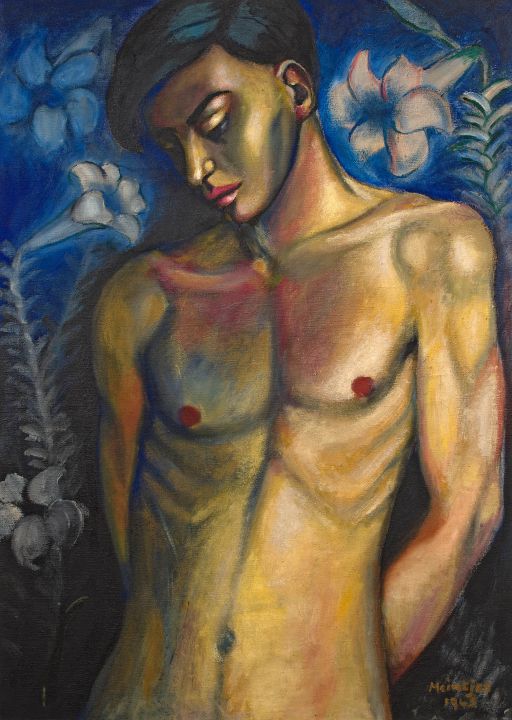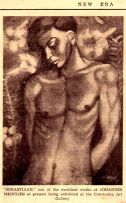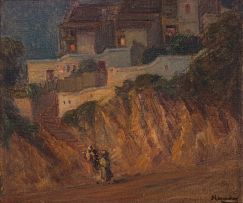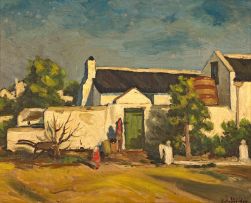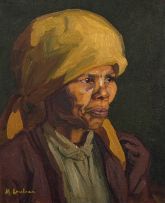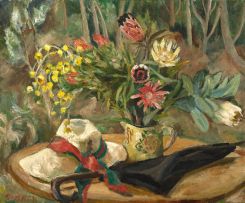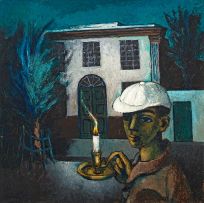Important South African and International Art, Decorative Arts & Jewellery
Live Auction, 15 October 2018
Art: Evening Session
Incl. Buyer's Premium & VAT
About this Item
signed and dated 1945
Notes
Pieter Marincowitz writes in Johannes Meintjes: Lyrical Work, a monograph published in 1948 when the artist was 25:
"In the mid-20th century South African context where homosexuality was illegal and punishable by law, Meintjes - like his contemporary and friend Alexis Preller - was forced to keep the nature of his sexuality hidden from public view. In this large and important work, painted in what is arguably the most visually compelling period of his art, directly before leaving for London, the melancholic and introspective elements of illicit sexual desire are immediately evident. The naked subject is seductive yet coy, his gaze downward and inward, absorbed with the self and the senses - represented by the beauty and fragrance of the St Joseph's lilies that surround him. With a mature vision, evidenced in Sebastiaan, Meintjes "expresses the dreams, the unknown stirrings and indefinable longings of adolescence".1
Even when Meintjes painted from a model his subject invariably took on the appearance of a self-portrait. He was conscious of this inclination to self represent and in a diary entry for 17 April 1945 he noted: "My groot nuwe werk, Sebastiaan, is nou voltooi. Iemand het daarvoor geposeer, maar dit lyk soos 'n selfportret" ["My large new work, Sebastiaan, is now complete. Someone posed for it, but it looks like a self-portrait"].2 His diaries affirm that he lived in a world intensely focused around his sense of self, as well as his art.
1. Pieter Marincowitz, Johannes Meintjes: Lyrical Works, Anreith Press, 1948, page 16.
2. Dagboek van Johannes Meintjes, vol 1, Molteno, 1961, page 106
Literature
Catalogue number JM 72.
Dagboek van Johannes Meintjes: Deel I: Feb 1941 - Feb 1947 (1961). Molteno: Bamboesberg Uitgewers. Page 106 and 184.
Michael Stevenson, South African Art 1840 - Now, January (2005), no 5.
